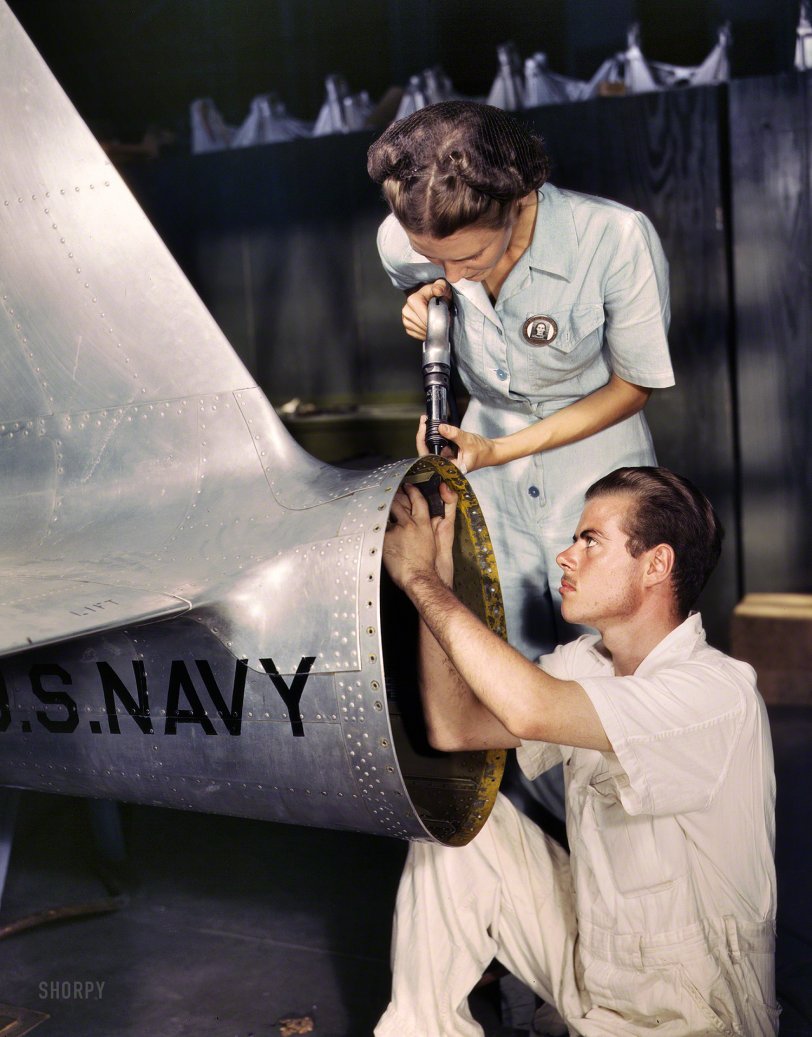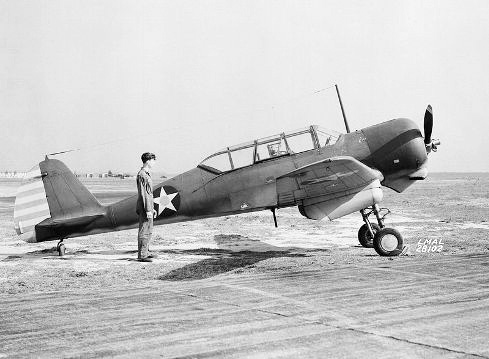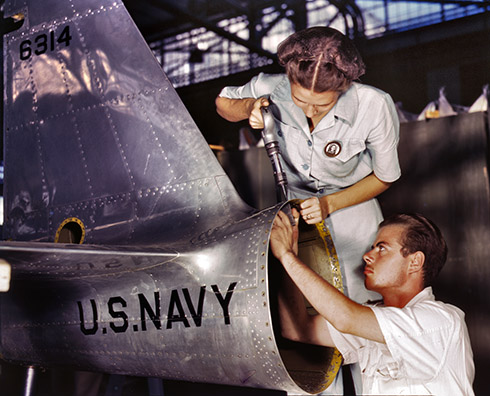


Framed or unframed, desk size to sofa size, printed by us in Arizona and Alabama since 2007. Explore now.
Shorpy is funded by you. Patreon contributors get an ad-free experience.
Learn more.

- Details, Details
- What's that building to the left of the tower?
- Coal Barges
- Bromo-Seltzer
- Inner harbor
- The Basin
- What a headache!
- Giant stepladder?
- Baldwin 62303
- Baldwin VO-1000
- Cold
- No expense spared
- Tough Guys
- Lost in Toyland
- And without gloves
- If I were a blindfolded time traveler
- Smoke Consumer Also Cooks
- Oh that stove!
- Possibly still there?
- What?!?
- $100 Reward
- Freeze Frame
- Texas Flyer wanted
- Just a Year Too Soon
- WWII -- Replacing men with women at the railroad crossing.
- Yes, Icing
- You kids drive me nuts!
- NOT An Easy Job
- I wonder
- Just add window boxes
Print Emporium
Texas Tail: 1942

August 1942. Corpus Christi, Texas. "Mrs. Virginia Davis, a riveter in the assembly and repair department of the Naval Air Base, supervises Chas. Potter, a NYA trainee from Michigan. After eight weeks of training he will go into civil service. Should he be inducted or enlist in the armed service, he will be valuable to mechanized units of the Army or Navy." Pay attention, sonny -- you might end up flying this thing. 4x5 Kodachrome transparency by Howard Hollem, Office of War Information. View full size.
Brad
The man looks a bit like Brad Pitt in Inglorious Basterds.
As....You...Wish!!!
Young Potter bears a passing resemblance to "Westley" from Princess Bride when he came back as the "Dread Pirate Roberts"
Holding the Bucking Bar
Learning to hold the Bucking Bar is one of the FIRST things an FNG learns to do. I worked for Sikorsky Aircraft for 14 years making S-76s. "Here, Hold this Buckin' Bar" was one of the first things I heard after punching in on the first day.
Anyone else look at this photo...
...and say, "Gee, I didn't know Orson Wells did aircraft construction in WW2."?
In his hand
He is holding the most important part of the riveting operation...THE BUCKING BAR.
Nothing under construction.
Based on the already existing "U. S. Navy", the general appearance of the aluminum skin, the well-worn interior anti-oxide paint, and the rivetless holes where rivets obviously once, well, riveted, this Falcon's tail section is nothing more than a training piece. Most likely there used to be a complete airplane from there on up, but chances are good that as a training aircraft it came to grief and various bits went on to serve as instructional materials. I do wonder how many eyes were lost in such situations before someone realized it'd be smart to wear goggles.
The SNC-1 Falcon
It does appear by the narrowness of the tail section forward of the vertical tail and the location of the tail attachment rivets that the are constructing a component of a Falcon.

National Youth Administration
I must admit I had never heard of the NYA (National Youth Administration). My father was in the CCC, so we knew all about that one, but not the NYA.
Thanks Bridesmill
After commenting I realized that the Ryan ST/NR-1 has fabric covered flight surfaces and not metal as in the photo.
SNC-1 Falcon (CW-22N)
Build number belongs to a Curtiss SNC 1 (Navy advanced trainer, variant of the civil CW-22). Comparing this with the fairings & angles of the vertical & horizontal stabilizers seems to confirm this. First flight '40, introduced '42. One of 305 built for the Navy.
If I could see the rest of the tail
I might be able to ID the plane. It's definitely a small fighter. A P-40, maybe?

























On Shorpy:
Today’s Top 5